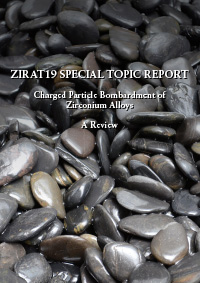
Charged Particle Bombardment of Zirconium Alloys
(ZIRAT19/IZNA14 STR)
The ability of reactor engineers to predict changes in the dimensions of the reactor core components during service is crucial to the safety and efficiency of reactor operation. Successful core design anticipates dimensional changes due to thermal expansion, stress-induced elastic deformation and, to some extent, large stress plastic deformation of core components. Of greater difficulty is predicting dimensional changes due to the effects of the intense irradiation environment, mainly due to high energy neutrons produced by the fission process. Fuel rods, spacers/grids, channels, guide tubes, tie rods, other structural components, etc. – all undergo irradiation-induced dimensional changes due to irradiation growth, irradiation creep, irradiation-altered plastic deformation, and irradiation-influenced corrosion and hydriding of the zirconium alloy components. These topics and process are routinely covered by the ZIRAT Programmes. This Report reviews the effect of ion irradiation (or ion bombardment, used interchangeably in this report) on not only the standard dimensional stability topics but also the full range of properties that can be influenced by ion irradiation. The primary questions addressed are: What properties of zirconium alloys can ion irradiated simulate (emulate or substitute for) neutron irradiation? How, or to what extent, can ion bombardment complement neutron irradiation?






